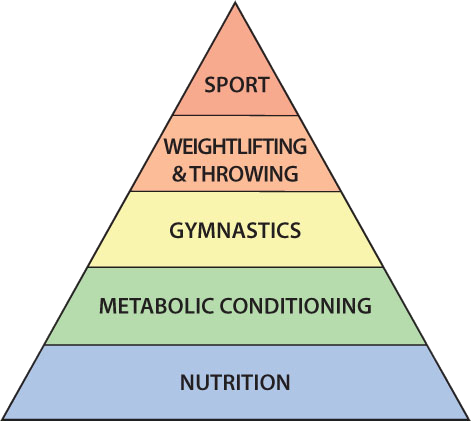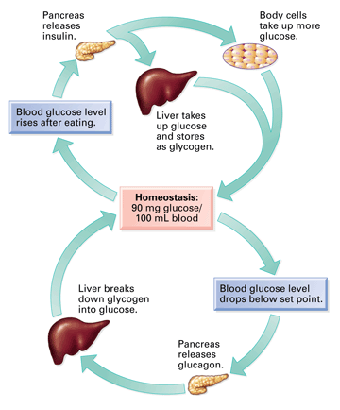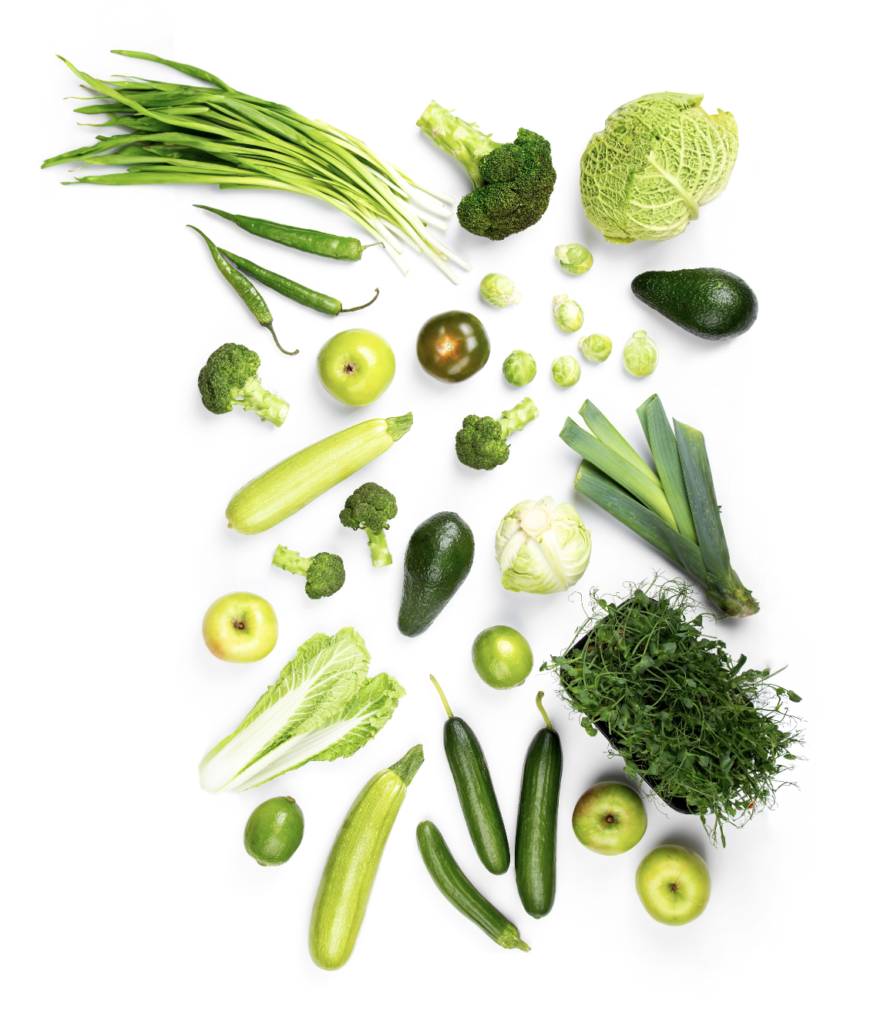Why is Nutrition Important?
Nutrition is the foundation for health. The fuel that we put into our bodies powers not only our metabolism, but also, our workouts. Optimizing both nutrient quality and quantity will build the strongest possible foundation, and will be protective of health over a lifetime.
With good nutrition, we can reverse or prevent many chronic diseases, helping us live longer and healthier lives! Changing the way we eat can seem overwhelming at first, so we usually start with small changes, like eating more “quality” foods and getting enough protein each day. Then, we work to do this consistently at meals by building balanced meals. From there, we have the option to look more closely at “quantity.”

Theoretical Hierarchy of Development of an Athlete (1)

Insulin, Glucagon and Blood Sugar Homeostasis (2)
Food as Fuel:
Hormones, Macronutrients and Micronutrients
The Problem
If we eat too much, relative to the above factors, and particularly with processed foods (foods that are readily available in modern society, calorically dense, and highly addictive), the body will be forced to over-produce insulin. This state of elevated insulin levels—hyperinsulinemia—can lead to weight gain, disorders (such as hypertension, hyperlipidemia, glucose intolerance, and obesity), and disease (type II diabetes, heart disease). (3)

Eat For Quality
- Meat: chicken, fish, beef, pork, lamb
- Vegetables: green vegetables, squashes, peppers, onions
- Nuts/Seeds: almonds, cashews, coconuts, avocados, oils
- Some Fruit: berries, apples, oranges, bananas
- Little Starch: potatoes, sweet potatoes, rice, grains, beans
Step 1: Build a Balanced Meal Plate
To build a balanced plate of food at breakfast, lunch and dinner, put these on your plate:
- 1-2 “fist-sized” amounts of lean protein
- 1-2 “fist-sized” amounts of fruits and vegetables
- 1-2 “thumb-sized” amounts of fat (this might be the cooking oil for your protein or veggies!)
- 1 “fist-sized” amount of starchy carbohydrates
Eat The Right Quantity
The second line of World Class Fitness in 100 Words: “Keep intake to levels that support exercise, but not body fat.” (6) This means that overeating on a regular basis will lead to weight gain, and under-eating on a regular basis will lead to weight loss. Total calories in/out is the most important metric when the goal is body composition changes. From there, macronutrient breakdown is the second most important factor, and nutrient quality comes in at third.
If someone has a body composition goal, or is very serious about optimizing his or her fitness, he or she will need to not only eat high quality foods, but also begin to track the amount of food that is consumed in order to optimize for performance, or any other health marker. Just like we record our results (workout scores, PR’s) in the gym, and then analyze those results to determine whether or not we are improving our fitness, we can also track our input (our food choices) to determine what foods and how much of them lead to the greatest results. We do this by recording what we eat, observing our performance in the gym, and then modifying our initial food intake.

Sticking With It & Scaling To Your Level
Changing your habits, particularly with a subject as personal as nutrition, can be challenging. It takes time to develop and stick to new ones, especially if others have been ingrained for a long period of time. There will be an adjustment period–one that will likely be uncomfortable, as the body adapts not only to new and different foods (and quantities of them). A nutrition coach or dietitian can help immensely with this process by introducing one new habit at a time, and helping the athlete find strategies to maintain this habit! We can help you with this with personalized nutrition coaching!
To help facilitate these types of big changes, we recommend scaling any diet at first, just as we scale our workouts. For newbies to any nutritional modification, we first recommend three to four weeks working only the quality dial (see the “building a balanced plate” section above!). Once that has been tackled, a person has the option to move to the quantity dial (this step is only recommended for a small number of athletes).
A Note on Weight Loss:
If the immediate goal is weight loss or body composition change, the long-term goal is not to be in a caloric deficit indefinitely. We want to be consistent, and as compliant as possible, to achieve the desired end goal as quickly as is safe and healthy, so that we can enter an indefinite maintenance phase that allows for 85-90% focus on quality and quantity, and the occasional indulgence in treats or alcohol.
No matter what, we want your nutrition to be sustainable, rather than an all-or-nothing approach. Overall compliance across time will depend on a person’s goals and lifestyle.
Additional Resources
- We offer personalized nutrition coaching in the Precision Nutrition methodology! Go here.
- MyFitnessPal (tracking food and calories)
Why MPH Does NOT Recommend the Paleo Diet
References
- (1) Glassman, G. (2002). What is Fitness. CrossFit Journal. Retrieved November 1, 2015, from http://library.crossfit.com/free/pdf/CFJ-trial.pdf
- (2) Leach, C. (2013, July 17). Harnessing Hypos: Glucagon As An Everyday Tool. Retrieved November 12, 2015, from
- (3) Kaplan, N. (1989). The Deadly Quartet. Arch Intern Med Archives of Internal Medicine, 1514-1514.
- (4) Glassman, G. (n.d.). World Class Fitness In 100 Words. Retrieved from http://www.crossfit.com/cf-info/start-diet.html
- (5) Wolf, R., & Cordain, L. (n.d.). The paleo solution: The original human diet.
- (6) Glassman, G. (n.d.). World Class Fitness In 100 Words. Retrieved from http://www.crossfit.com/cf-info/start-diet.html